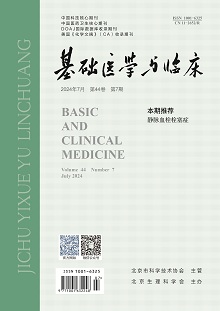Primary research and identification of associated proteins in serum of cervical cancer
2012, 32(2):
191-194.
 Asbtract
(
132 )
Asbtract
(
132 )
 PDF (542KB)
(
484
)
Related Articles |
Metrics
PDF (542KB)
(
484
)
Related Articles |
Metrics
Primary research and identification of associated proteins in serum of cervical cancer Rong Chun-hong, Shen Keng, Yang Jia-xin, .Department of Obstetrics and Gynecology Peking Union Medical College Hospital,Beijing,100730,China
[Abstract] Objective: To discover different proteins between cervical cancer and control group , then we separate, purify and enrich the interest proteins and identify them by MS. Methods We use SELDI-TOF-MS to analyze the difference peptide profiling and proteins between serum of cervical cancer patients and the control group, interested proteins are subsequently separated and enriched by ion chromatographic fractionation, SDS-PAGE ,at last the proteins are identified by LC-MS/MS analysis, SELDI-TOF-MS is used to verify the existence of interest proteins. Results 12 different proteins are identified in serum between cervical cancer and the control group(P<0.05). We separate, purify and identify interest proteins whose M/Z is 15960Da and get 8 kinds of proteins according the database. The most adjacent to 15960Da molecular weight comes from transthyretin (TTR), which there are some subjects showed it’s correlation to tumor. The TIF1-β protein, namely KAP-1/KRAB/TRIM28, arose us by it’s biologic action, because it’s expression can inhibit or activate tumor related genes then promote the development of malignant tumor. Conclusions We are the first in China who applying the technology course that discover different proteins by SELDI-TOF-MS , purify and enrich interested proteins monitoring by SELDI-TOF-MS, identify it by LC-ESI-MS/MS. We purify and identify the protein whose M/Z is 15960Da, data of IPI gives us 8 kinds of possible proteins, in which the molecule weight of TTR is the most close, but TIF-1β has the most important biologic behavior .
[Key words] cervical cancer SELDI-TOF-MS TIF1-β TTR


